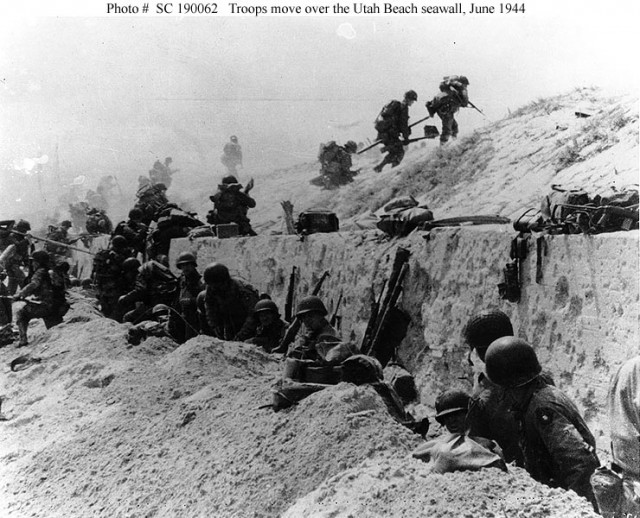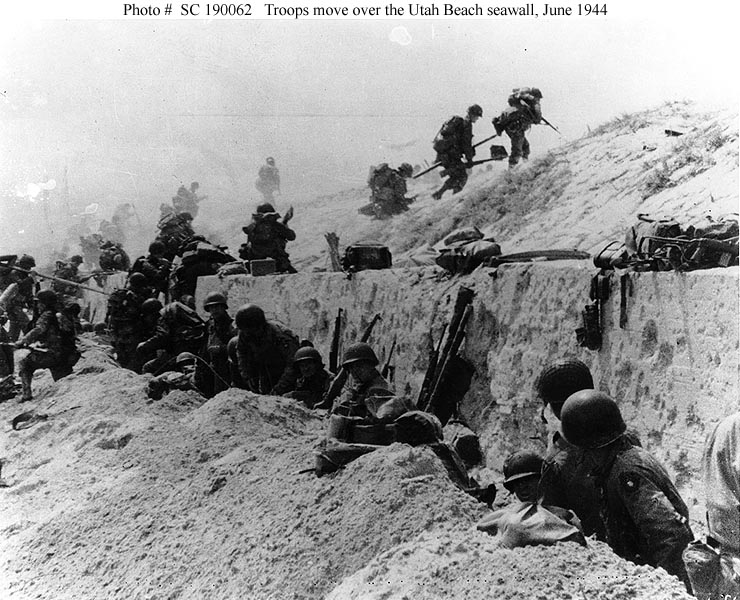
The 70th anniversary of the D-Day landings is just around the corner. And stories of the struggles of soldiers during the war emerge with renewed vigor.
The scenery hosted by Normandy hardly attest to the once brutal battle that commenced in the green pastures almost 70 years ago. The beautiful country landscape betray its history that it was once a front line of the battle to liberate Europe from the grips of Germany.
The villages with their old houses are testaments of the fighting that once took place. At Sainte Mere Eglise on the Cotentin peninsula, the first of the Allied landings took place. Men of the 101 and 82 Airborne division first set foot taking their landings by way of parachute to Nazi-occupied France on June 6, 1944.
The men who arrived in waves of thousands were to seize crucial and strategic crossroads town concealed by the dark of the night. However, fate played a trick on the men. A house at Sainte-Mere-Eglise burst into flames and brightened the night revealing the descending paratroopers to the angry volley of fire of the German garrison.
Hundreds fell in the slaughter. One of the men, John Steele, was unlucky to witness the deaths of his fellow paratroopers as Germans shoot them one by one as they fell. His parachute got caught and he dangled from the spire of the church where he had a clear view of the landing.
The Airborne Museum, which was built on the same spot of the burning house, is a symbol that reminds the present generation of the sacrifice of the American men who made history.
The Airborne Museum gathered stories from the men and locals who witnessed or played a role in the battle that happened during Allied D-Day landings.
After landing from the air, the 101 and 82 were to link up with other Allied troops who made their landing on the beaches of Normandy. These include the men who made their landing at a beach codenamed Utah which was then strategic to isolate the very crucial port of Cherbourg.
By 7:00 am of June 6, the beaches of Normandy, including the beaches of the wartime code names Utah, Sword, Juno and Gold, were littering with Allied forces who successfully broke through the defenses of the Germans.
The museum gazes on the serene sand weathered by wind and water at Utah beach — a site which unknowingly hosted one of the bloodiest battles in history. The museum hopes to bring to life the stories based on personal accounts, memento, military documents and archive films of the very important event that occurred in the place and the very important people who played crucial roles during the event.
And the Allied men who landed did not come to enjoy the sun, beach and scenery. The stories told tales of valiant men who undertook the daunting task of breaking through an almost impenetrable and fearsome German defense.
The Germans ensured they had the most advantageous positions. They filled civilian towns with heavily armed garrisons while the population were held hostage. The Germans also captured the higher ground filling the area along the seaside plains of the Contentin with heavy ammunition and fire power poised to antagonize with sheer killing force the approaching enemies.
Among the heavy fire power positioned at the German line of defense was the Crisbecq Battery. The gun was defended by 400 troops. It was the target of numerous bombing raids until finally it was stifled. From its grave, the gun was salvaged by a group of enthusiasts. They dug the gun out of the undergrowth and preserved the important historical piece from being lost to the world.
Another museum which commemorates fallen heroes of the war is the Overlord Museum. The museum, which was opened in 2013, was built next to the American War Cemetery at Colleville-sur-Mer near Bayeux.
The museum was dubbed after an Allied code name which was used during the D-Day Landings. The museum took years to build out of the labor of love. It is set to be an abode of the largest collection of retired and working military vehicles.
The city of Caen also suffered heavy losses during the Second World War. It reportedly records its casualties at 1,000 only a few weeks after the D-Day. The Caen Memorial was built as a war history museum and a symbol for peace. The museum cleverly sets up its Second World War section to help visitors experience the build up of the war. A ramp spirals down into darkness until the war is declared. Visitors of the museum are then greeted by a massive photo of a smiling Hitler.
Normandy is not only historically significant as a site of the Second World War. One of Normandy’s major towns is also known because of the story of invasion it holds. Only in this story, the players are no longer the Germans and the Americans.
Bayeux has in its keeping a very historical tapestry which was impressively embroidered by human hands. The work is overwhelming measuring 70 meters long. Any tourist would take the chance of getting a glimpse of the piece.
In the town, a classice fin-de-siecle mansion also sits beautifully at the town center with covered parking for the motorbikes. Another establishment that offers excellent dinner is the Le Pommier, a popular restaurant. The restaurant offers a view of Bayeux’s magnificent cathedral and a selection of local delicacies.
During the 70th anniversary of D-Day on the later part of the year, Normandy as a country and the Cotentin in particular will be a destination for millions of tourists who are expected to pour to the war sites.
Tourists will find themselves in the comfort of a variety of accommodations among them the B&B at Les Pieris which is known for its hospitality and charm. The chambre d’hote is the “home of Nadine and Patrick at their gite in the pretty village of La Vast, near Cherbourg”.
The home offers three rooms decorated individually. The breakfast gives the taste and warmth of homemade cooking such as jams, cakes and brioche which are from the bakery across the road.
Arromanche also offers a view of the rusting and rotting wreck at the Mulberry Harbours where bouy floated to Normandy aiding the D-Day landings. The trip can be made before leaving the site of battle making a ride up the Cote Fleurie and heading towards Deauville.
During the drive up the beach, tourists will see villages like popping images from postcards as well as empty roads.
The Domaine de Villers is an expensive accommodation worth experiencing. It offers large comfortable rooms. It also offers a great view of the coast and Deauville along with luxurious meals.
The country once held the struggle between two forces fighting for Europe. And tourists of this generation will pour to visit the place to take a glimpse of the past.
